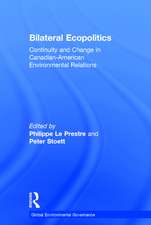Steppe Ecosystems
Editat de Manuel B. Morales Prieto, Juan Traba Diazen Limba Engleză Hardback – 31 aug 2013
Preț: 1083.86 lei
Preț vechi: 1482.97 lei
-27% Nou
Puncte Express: 1626
Preț estimativ în valută:
207.46€ • 225.43$ • 174.38£
207.46€ • 225.43$ • 174.38£
Carte disponibilă
Livrare economică 31 martie-14 aprilie
Preluare comenzi: 021 569.72.76
Specificații
ISBN-13: 9781628082982
ISBN-10: 1628082984
Pagini: 346
Ilustrații: illustrations
Dimensiuni: 183 x 258 x 25 mm
Greutate: 0.68 kg
Editura: Nova Science Publishers Inc
ISBN-10: 1628082984
Pagini: 346
Ilustrații: illustrations
Dimensiuni: 183 x 258 x 25 mm
Greutate: 0.68 kg
Editura: Nova Science Publishers Inc
Cuprins
Preface; Steppes across the World: An Overview with Emphasis on the Iberian Peninsula; Factors Determining Species Richness & Composition of Steppe Bird Communities in Peninsular Spain: Grass-Steppe vs. Shrub-Steppe Bird Species; Species Richness & Niche Differentiation of Darkling Beetles (Coleoptera: Tenebrionidae) in Mongolian Steppe Ecosystems; Diversity Patterns in the Steppe of Argentinean Southern Patagonia: Environmental Drivers & Impact of Grazing; The Vegetation Structure of the Mongolian Altai Mountain Steppes; Resilience or Vulnerability? Vegetation Patterns of a Central Tibetan Pastoral Ecotone; Estimation of Carbon Dioxide Exchange of Cascade Geochemically Conjugated Steppe Ecosystems in Salinity Condition; The Late Quaternary Paleoecology & Environmental History of Hortobágy, a Unique Mosaic Alkaline Steppe from the Heart of the Carpathian Basin; The Conservation of High-Interest Plant Species Offers the Chance to Preserve Unique & Vulnerable Representatives of Gypsum Steppes; The Cover of Steppe Vascular Plants by the Protected Area Network of the Republic of Mordovia (Russia); Recovery of Degraded Steppe Soils of Northern China after Grazing Exclusion; Effects of Ungulate Grazing on Soil Microbial Diversities in Inner Mongolian Steppes of Northern China; The Pseudo-Steppe of La Crau (Southeastern France): Origin, Management & Restoration of a Mediterranean Rangeland; Critical Review of the Algerian Experience to Manage The Land Degradation; Sustainable Development in the Caldenal (Argentina); Index.



















